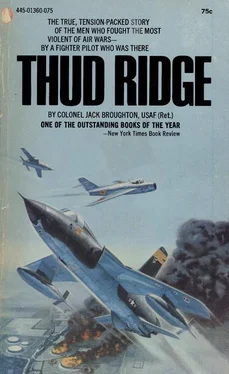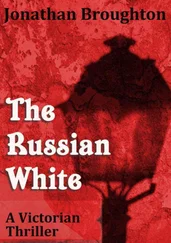The objectives of the air campaign against North Vietnam were defined by Washington as retaliation and punishment of the North for its attacks upon the South and upon U.S. units; a psychological boost to the hard-pressed South Vietnamese peoples; and the imposition of a limitation on the supplies provided by North Vietnam to the enemy in the South.
The air campaign undoubtedly improved the morale of South Vietnam, but it failed to depress the morale of the North in any vital manner, failed to persuade Hanoi to cease and desist, and hampered but never halted the large-scale flow of supplies and replacements to the South from North Vietnam, Laos, and Cambodia.
U.S. memories are short; air power should never have been expected to accomplish all of these objectives, particularly when the restrictions and limitations placed upon the air campaign doomed it a-borning.
There was undoubtedly initial overenthusiasm, among some professionals as well as the Administration and the public, about what air power might accomplish. Americans like to think in terms of an immaculate war won in the wild blue yonder, and some Air Force publicists have encouraged this Madison Avenue fantasy. The Air Force is a young service led by enthusiasts who had had to fight hard to establish its validity against the military traditionalists, and from time to time it has oversold its capabilities. The lessons of World War II, when air power proved to be a vital part—but still only a part—of the military team, and of Korea, when the air interdiction campaign—Operation Strangle—failed to strangle, were quickly forgotten, and some in Washington, including many laymen and a few professionals, anticipated quick results when the bombs began to fall on North Vietnam.
But oversell was not primarily responsible for the disa-pointing results in North Vietnam. In 1965 when the bombing campaign started the Joint Chiefs of Staff recommended that some ninety-four key military targets be destroyed within two to three weeks in an overwhelming blitz. The campaign was planned in accordance with the military principles of mass, momentum, and concentration to maximize the shock effects of air power to the full. North Vietnam’s air defenses then were weak; her gasoline and petroleum storage, electric power, transportation, and other vital targets were concentrated and vulnerable; and the cumulative .effect of destroying all these targets rapidly would, at the very least, have materially impeded Hanoi’s aid to the Viet-cong and might have shaken the North Vietnamese hierarchy.
The recommendation for a planned bombing campaign was ignored, but the bombing was started, hedged around with so many restrictions and limited so severely by the policy of gradualism that it was, except for brief periods, largely ineffective. Instead of striking ninety-four targets in three weeks, the power of the United States Air Force and Navy was applied in driblets over three years; some of the ninety-four targets have not yet been hit. Initially, even the Russian-provided and Russian-directed SAM (surface-to-air missile) sites could not be bombed at all; later, only if the SAMs endangered our aircraft. The tank farms at Haiphong were on the forbidden list for months; the enemy had ample time to disperse and conceal his fuel supplies before we bombed them. Power plants were similarly spared until it was too late. Airfields were prohibited targets until late in the war. Migs could and did take off and land directly beneath the bomb sights of our aircraft, and the rule forbade their destruction until they were airborne. Key communication bottlenecks, like the Paul Doumer bridge across the Red River at Hanoi, and the Haiphong docks, through which funneled most of the food, fuel oil, trucks, bulk materials, weapons, ammunition, and heavy equipment essential to Hanoi’s survival were forbidden targets.
In short, the United States pulled its punches in North Vietnam; Hanoi fought a total war, and Russia and Red China provided the massive aid without which Hanoi could not have survived. The result was inevitable: military and psychological stultification, and an increasing pilot and aircraft loss rate as Moscow helped Hanoi to establish the most sophisticated air defense system ever tested in war—a far-flung complex of missiles, ground guns, interceptors, radar, and communications and control centers.
Targeting restrictions formed only one part of the remote-control limitations that nullified the efforts of our finest fliers. The permissible targets, except for a brief period of intensified bombing in 1967, formed no part of a coherent pattern. The target list was controlled tightly by the White House, with the civilian chiefs of the Pentagon and State Departments as the chief advisers to the President, and with the Joint Chiefs of Staff (the only body with military experience) the low men on the totem pole.
First Washington and then Hawaii—the latter the headquarters of the Conimander-in-Chief Pacific and of the Commander of Pacific Air Forces—controlled such details as flight profiles, armament loads, flak suppression missions, and reconnaissance. Prohibited areas abounded; there was a 30-mile “neutral” strip along the Chinese frontier, a 10-mile prohibited zone around Haiphong, a 30- and a 20-mile circle—each with its prohibitions—around Hanoi, and so on. Our pilots had to approach their targets by paths in the sky that were so well defined for the enemy (by our own actions) that his defense problem was simplified and our loss rate was increased.
There is no doubt whatsoever that all these political restrictions needlessly cost American lives, nullified the positive results the bombing campaign might have achieved, and notified the enemy that Washington was overcautious, uncertain, and hesitant. It is not adequate to reiterate the old shibboleth that Vietnam, or any guerilla war (and Vietnam became far more than a guerilla war), was a political war. Of course it was, but any war must have, first and foremost, a political objective or it is senseless slaughter. The problem of any war is to utilize military means effectively to achieve the political objective; in Vietnam senseless political restrictions hampered our military technology to such a degree that it became almost impossible to accomplish our political objectives.
Not that the military did not make mistakes; not that they are without some blame for the frustration and the unnecessary casualties. The Air Force wings in Thailand were controlled by a multiplicity of overlapping and unnecessary headquarters, cluttered with administrative red tape. The air war against the North was handicapped by our lack of technical preparation for h. The same weaknesses had been evident in Korea: the lack of a really effective all-weather fighter (the Navy’s A-6 attack plane, which appeared midway in the war, was an exception); the inability to pinpoint gun or SAM sites and radar control stations; the lack of appreciation, at high levels, of what a sustained bombing campaign required. There had been too much dependence on nuclear weapons, and the “bomber generals” in the Air Force had long down-graded the tactical air arm.
Indeed, the Air Force has been unfortunate in much of its top-level leadership since World War II. Some of its leaders have been either “parochial” or political (in the narrow milltary sense), or both, and virtually all of them have come from the ranks of the bomber generals. Long before World War n, General C. L. Chennault, then a less senior officer, charripi-oned the role of the fighter in the achievement of air superiorly at the Air Corps Tactical School. But he lost the argument, and tactical air power still found itself in Vietnam subordinated to the experiences and the prejudices of the SAC (Strategic Air Command) pilots and the bomber generals.
For the Navy, which had long emphasized tactical air power and which contributed so greatly to the air campaign against the North from heaving carrier decks in the Tonkin Gulf, this was not a problem. But what hurt many of the fighter-pilot “tigers” of the Air Force, flying from their bases in Thailand, was the feeling that their own service did not always understand their requirements and their problems and did not champion the men who were doing the fighting and dying.
Читать дальше












